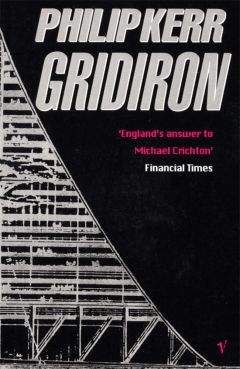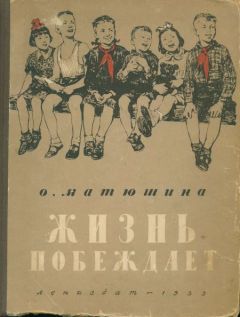Philip Kerr - Gridiron

Обзор книги Philip Kerr - Gridiron
In the heart of a huge, beautiful new office building in downtown Los Angeles, something has gone totally, frighteningly wrong. The Yu Corporation Building, hailed as a monument to human genius, is quietly snuffing out employees it doesn't like. The brain of the building can't be outsmarted or unplugged — if the people inside are to survive, they'll have to be very, very lucky.
GRIDIRON
Philip Kerr
For Jane, as always, and for William Finlay
'Did I solicit thee from darkness to promote me?'
John Milton'… that glass of ice water in the face, that bracing slap across the mouth, that reprimand for the fat on one's bourgeois soul, known as modern architecture.'
Tom WolfePrologue
'We are in pursuit of a new idea, a new vernacular, something to stand alongside the space capsules, computers and throwaway packages of an atomic electronic age…'
Warren ChalkThe American glanced at the setting sun in the sky above the new Shenzen Football Stadium and prayed that the execution would be over by the time the denuded centre spot was in shadow. Anxious to be getting shots, he focused his camera on a group of self-important men, some of them dressed in Mao jackets, but others wearing plain dark suits, who were taking their seats a dozen or so rows away from him.
'Who are those guys?' he asked.
His fixer and translator stood on the toes of her high-heeled shoes and followed the line of his long lens across the heads of the crowd beneath them.
'I think, Party,' she said. 'But some businessmen also.'
'Are you sure we've got permission to do this?' he murmured.
'Yes, I'm sure,' said the girl. 'I bribed the head of PSB in Shenzen. They won't bother us today, Nick. You can believe it.'
PSB was the People's Republic of Communist China's Public Security Bureau.
'Baby, you're a star.'
The Chinese girl smiled and bowed her head.
By now the stadium was nearly full. The mood of the several thousand strong crowd was expectant but good humoured, as if it really expected to see a football match. At the arrival of the four condemned men, each of them held tightly by two PSB guards, there was an excited murmur. As was usual, the heads of those who were condemned to be shot had been shaved and their arms bound just above the elbows. The crimes they had committed were listed on cardboard placards that hung around their necks.
The four men were forced to kneel at the centre spot. The face of one man filled the viewfinder of the camera and the American was struck by its dull expression, as if its owner cared little whether he died or not. He guessed they had been drugged. He pressed the shutter button and moved on to the face of the next man. His expression was the same. As the PSB man aimed his AK47 assault rifle at the back of his first victim's head, the American checked the position of the shadow on the pitch. He tried not to smile but found that the urge was irresistible. These were going to be great photographs.
-###-The Los Angeles Police Department had never cared much for public assemblies of the city's populations: Hispanics, Native Americans, Blacks, Okies, hippies, gays, students, and strikers had all felt the batons and stun guns of LA's finest on one occasion or another. But this was the first time that any of the twenty-five helmeted officers on duty outside the half-built office block on the building site that was to become the new Hope Street Piazza could remember the city's Chinese community gathering to voice its protest about something.
Not that Los Angeles had a very large concentration of Chinese when compared to San Francisco. Chinatown itself, in the city's North Broadway area, right on the doorstep of LA's Police Academy, was no more than twenty thousand people. Most of the city's fast-growing Chinese population lived in suburbs like Monterey Park and Alhambra. It was not a very large demonstration either: just a hundred or so students, protesting against the Yu Corporation and its apparent complicity in the repressive rule of the People's Republic of China. The Corporation's eponymous chairman and chief executive, Yue-Kong Yu, had recently been pictured in the pages of the Los Angeles Times, attending the execution of some dissident Chinese students in Shenzen. But because this was LA after all, and even small crowds could get quickly out of hand, an Aerospatiale helicopter from the LAPD air force kept a discreet electronic eye on the proceedings and provided regular digitized communication bulletins for the central dispatch computer that was located in a missile-proof bunker five floors beneath City Hall. The demonstrators were peaceful enough. Even when the motorcade of stretch limousines bearing Yue-Kong Yu and his entourage arrived at the site, they did little more than chant and jerk their placards up and down. Shielded by police and half a dozen private security men, Mr Yu moved smoothly up a flight of steps and through his new building's front door, a Neolithic stone dolmen brought from the British Isles, without even looking at the angry young men and women.
In the nearly finished atrium, Mr Yu turned and looked back at the door, obliquely positioned for better feng shui. He had bought the three ancient standing stones-one placed on top of the other two as a lintel-because of their similarity to the Yu Corporation logo, itself based on the Chinese character symbolizing good luck. He nodded appreciatively. He knew that his architect had not wanted the stones in such a modern building. But once Mr Yu made up his mind he was not easily dissuaded. For all the architect's opposition he had done well, Mr Yu thought. It was a most auspicious-looking doorway. And a fine-looking atrium. The best he had seen. Better than the Yoshimoto Building in Osaka. Better than the Shinn Nikko building in Tokyo. Better even than the Marriott Marquis in Atlanta.
When the last of his guests had followed Mr Yu inside, the sergeant in charge of policing the demonstration waved one of its number towards him, having decided that the young man's loudhailer marked him as the group's ringleader.
Cheng Peng Fei, a visa student in business administration at UCLA, stepped quickly forward. The only son of two Hong Kong lawyers, he was not the type to make a policemen tell him something twice. He had a flat, almost concave disc of a face.
'You're going to have to move your people over to the other side of the site,' drawled the police sergeant. 'Seems like they want to drop a tree branch from the top level, and we wouldn't want any of you getting injured, now would we?' The sergeant smiled. A Vietnam vet, he regarded all orientals with deep suspicion and hostility.
'Why?' said Cheng Peng Fei.
'Because I say so, that's why,' snapped the sergeant.
'No, I mean why do they want to throw a tree branch from the top?'
'What am I, a fuckin' anthropologist? How the hell should I know?
Just move it across the other side, mister, or I'll book you for obstruction.'
The topping-out ceremony was traditionally performed when the topmost stone was fixed to a building, an act signalled by a branch of evergreen being thrown to the ground and burnt, and a toast drunk to celebrate completion of the structural envelope. But as those who were waiting on the rooftop knew, the real topping-out ceremony had taken place some ten months before, when Mr Yu had been unable to attend. The envelope was already more than half-filled, but Mr Yu, making a rare visit to Los Angeles to sign a deal to supply the United States Air Force at Edwards Air Force Base with six Yu-5 Supercomputers (each one of them capable of performing 1012 operations a second), was keen to see how his new smart building was progressing. Mr Yu's son, Jardine, who was managing director of the Yu Corporation in America, had wanted to mark the occasion of his father's visit, and so a second topping-out ceremony was arranged, with a cosmetic 'last' roof slate placed on top of the twenty-five storey building by Arlene Sheridan, a Hollywood actress rather advanced in years whom the seventy-two-yearold CEO had long admired. The rooftop event was attended with an unusual degree of formality: a sit-down lunch of ripened fruit, Chinese hens stuffed with lucky red charms, a golden pig, and Tsingtao beer were provided for fifty guests, including a senator, a congressman, the deputy mayor of Los Angles, a federal judge, a USAF general, a studio head, representatives of the Downtown Strategic Plan Advisory Committee, selected members of the press (with the notable exception of the Los Angeles Times), the architect, Ray Richardson, and the chief engineer, David Arnon. No workmen were actually invited, unless you counted Helen Hussey, the site agent, and Warren Aikman, the clerk of works. A Taoist priest had been flown in from Hong Kong at the request of Jenny Bao, the Yu Corporation's feng shui consultant in LA, who was also present. An urbane, effusive little man, Mr Yu greeted his guests with a lefthanded handshake, his right arm having been withered since birth. For those who were meeting him for the first time, it was hard to reconcile his vast wealth (Forbes magazine had estimated his personal fortune at $5 billion) with the knowledge that he was on excellent terms with the Communist leaders in Peking. But Mr Yu was nothing if not pragmatic. After the introductions, it fell to Ray Richardson to introduce the building and the ceremony. The fifty-five-year-old self-styled 'architechnologist' at the microphone would have passed for ten or fifteen years younger. He wore a cream linen suit, a soft blue shirt and a quiet tie with a hand-painted look, all of which might have marked him as a European, most probably an Italian. He was in fact Scottish, but with the kind of accent that demonstrated long exposure to the southern California sun. Those who knew Ray Richardson well said that the accent was the only thing about him that showed any evidence of warmth. He unfolded several typewritten sheets, smiled experimentally and, finding the noonday sun too strong for his cool grey eyes, produced a pair of tortoiseshell Ray-bans and drew up the shades on his tiny soul.
'YK, Senator Schwarz, Congressman Kelly, Mr Deputy Mayor, ladies and gentlemen: the history of architecture is not, as you might think, an aesthetic one, but a technical one.'
Mitchell Bryan, sitting with the rest of the design and construction team, groaned inwardly as he realized he would have to endure yet another of his senior partner's breast-beating speeches. He looked at David Arnon and flickered his eyelids meaningfully, having first checked that Richardson's Native American wife Joan could not observe this small act of resistance. Mitch need hardly have bothered. Joan was watching Richardson with the rapt, close attention normally reserved for a religious figure. David Arnon stifled a yawn and settled back in his chair, trying to imagine what Arlene Sheridan, seated on the next table, would look like without her clothes.
'The history of all hitherto existing architecture is the history of technological advance. For example: the Roman invention of cement made possible the construction of the dome of the Pantheon — the widest dome in the world until the nineteenth century. In Joseph Paxton's day, the new structural possibilities of iron, and advances in plate-glass manufacture, made it possible to build the Crystal Palace in London, in 1851. Thirty years later, Siemen's invention of the electric elevator enabled the construction of the first multi-storey structure in turn-of-the-century Chicago. Exactly a century after that, architecture was drawing on developments that had been made in the aeronautics industry: buildings that made the most of new materials to reduce their mass, like Norman Foster's Hong Kong and Shanghai Bank.
'Ladies and gentlemen, I have to tell you that the modern architectural scene presents us with the greatest adventure of all: architecture that uses the advanced technology of space exploration and the computer age. The building as a machine in which invisible micro- and nanotechnology have replaced industrial mechanical systems. A building that is more like a robot than a shelter. A structure with its own electronic nervous system that is every bit as responsive as the muscles flexing in the body of an Olympic athlete.
'No doubt there are some of you present here today who will have already heard of so-called smart or intelligent buildings. The concept of the intelligent building has been around for a while and yet there remains little consensus of what makes a building intelligent. For me the distinguishing feature of the truly integrated intelligent building is that all the computer systems within the building, including those associated with the building's operations and those related to the building user's business, are connected together to form a single network using a databus, a screened cable containing a twisted pair of conductors. Like those minibuses that travel in a loop around the downtown area. Using the data-bus a central computer sends signals to various electronic subsystems — security, data, energy — in the form of the time-multiplexed, high frequency, 24-volt digital data commands.
'So, for instance, the central computer will interrogate a variety of linear, point and volumetric sensors within the building, and watch out for a fire. Only if the computer is unable to extinguish the fire itself will it telephone the local fire department and request human assistance.'
For a moment Richardson looked away from his script as a sudden gust of wind carried the voice of Cheng Peng Fei up from the building site below:
'The Yu Corporation supports the fascist government of China!'
'You know,' Richardson grinned, 'just before I got here I was speaking to someone about this building. She asked me if we would demonstrate what it was capable of. I said no, we wouldn't.' He extended his hand towards the sound of the protesters. 'But hey, what do you know? I was wrong. There is a demonstration after all. The only shame is that I can't end this one at the touch of a button.'
Richardson's audience laughed politely.
'As it happens, the most important aspect of this building's intelligence can't be demonstrated so easily. Because what makes this building really smart is not its ability to anticipate the pattern of use so that energy can be expended with the utmost parsimony. Nor is it the computer-controlled base isolators that will enable the structure to withstand earthquakes measuring up to 8.5 on the Richter Scale.
'No, what makes this the smartest building in LA, possibly in the whole United States, ladies and gentlemen, is its inherent ability to cope with not just the demands of today's information technology, but tomorrow's as well.
'When many American companies are already struggling to remain competitive with Europe and the East Asian Pacific Rim countries, it's an uncomfortable fact that there are a great many office buildings in America, some of them built as recently as 1970, that are prematurely obsolete: the cost of bringing them up to date to meet the demand of IT exceeds the cost of tearing them down and starting again.
'I believe that this building represents a new generation of office accommodation, one that will provide our country with the only means of ensuring that we remain competitive tomorrow; the kind of building that will guarantee that this great country is best placed to take full advantage of what President Dole has called the Global Information Infrastructure. Because, make no mistake about this, this is the key to economic growth. Information Infrastructure will be to the US economy of the next ten years what transport infrastructure was to the economy of the mid-twentieth century. Which is why I believe that you will soon be seeing many more buildings like this one.




